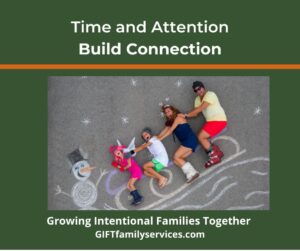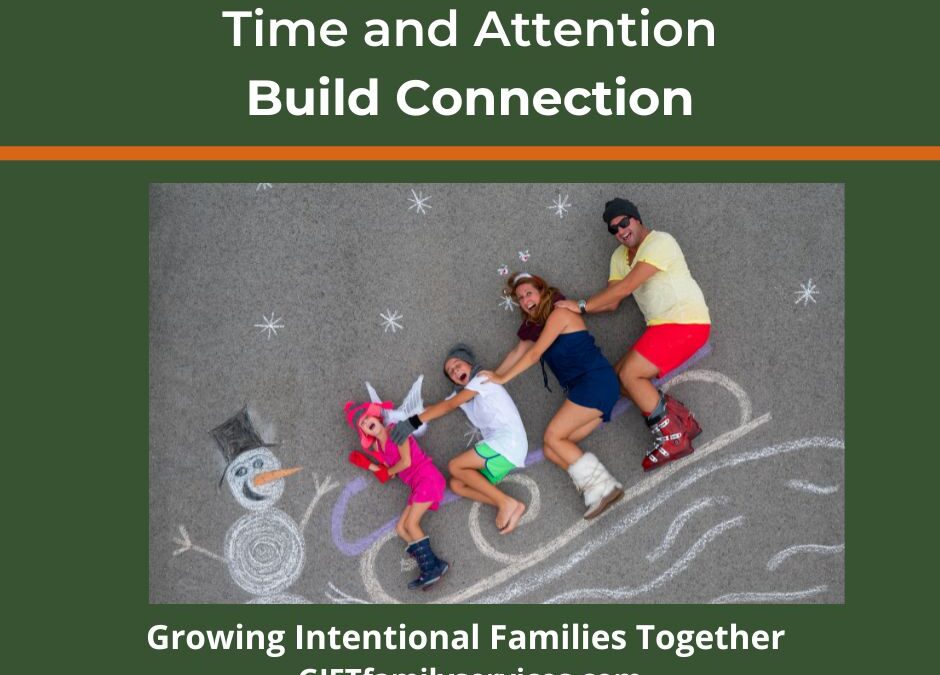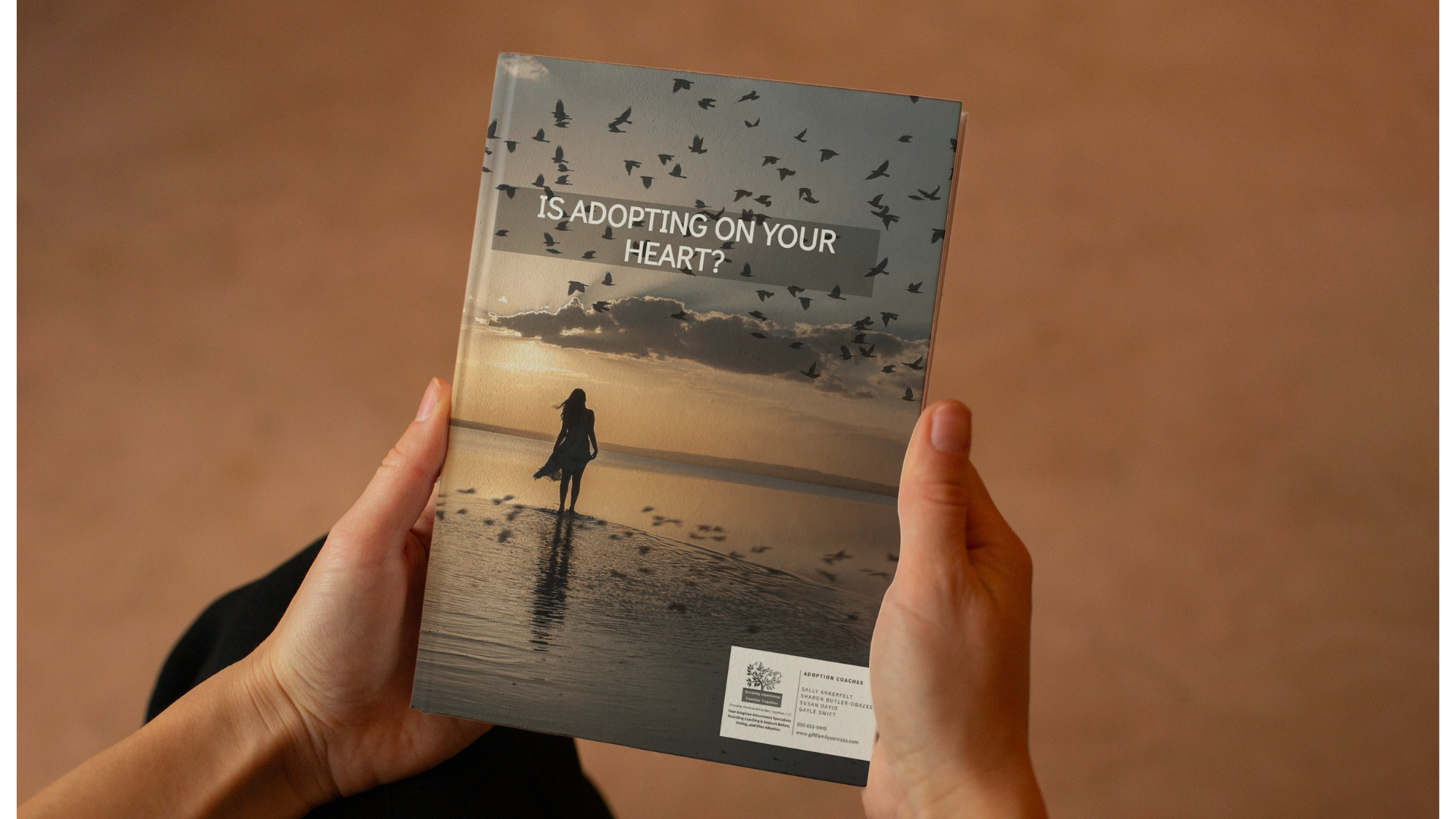
What unique factors complicate the art of gift-giving and its connection to relationship building within the context of an adoptive family?
It’s February so everyone’s media platforms will be filled with messages about how we can show our families and friends that we love and value them. Much of the focus will be on what we should buy. We will be bombarded by the idea that “stuff” is the most valued gift we can give. We will be encouraged to make the grand gesture, purchase the expensive gift, and present it with the flair of a TV production. The pervasive cultural message is that one’s esteem for the person is defined by the expense of the gift. We feel the pressure of this presupposition both as givers and recipients.
Understandably, we don’t want to hurt our loved ones nor do we want them to be disappointed or angry with us. So, we make the purchase and spend the money even though deep inside we recognize that such gifts cannot come close to expressing the esteem and affection we wish to express.
Deep in our hearts, we all know better. And yet… the juggernaut that is American marketing strives to make us forget this truth. Yet, anyone who has ever raised a child or been a child knows that a gift, regardless of how expensive or desired, can never fully substitute for genuine validation and affirmation. This truth is perfectly captured in the excited squeal of a child earnestly hooting, “Watch me!
And…lest we think it is only kids who crave attention, appreciation, and validation, a quick bit of introspection will remind us of our own similar needs. Even as adults, we enjoy the attention of loved ones and peers. We also delight in receiving—and giving—gifts and grand gestures.
Of course, there is nothing intrinsically wrong with gift-giving. We all enjoy presents—as long as we keep in mind what they can and cannot do.
Both as givers and recipients it is important to keep in mind financial realities so that expectations are grounded in reality. It is a good idea to periodically have conversations with our significant other about how our Family Values will guide our buying decisions. Hold similar, age-appropriate family conversations with our children so they can learn to ground their expectations in reality.
Again let’s concentrate on the adoption connection to gift-giving.
Fear of rejection and or shame might come into play if an adopted child feels that a gift’s value equates with their own self-value. So, anything less than the grandest gesture might be perceived as insulting or hurtful. It is important to help them revise this belief and to ground their expectations in financial reality. This is not a once-and-done conversation. It is a topic that needs to be explored regularly, not just prior to an upcoming gift-giving event.
Identity issues might be operant if a child sense that the gift reflects a denial of what they know to be their authentic selves. For example, if they have a passion for music and receive yet another sports-connected gift from a parent or other relative, they may experience the gift as agenda-laden, offensive, and clueless. They will see it as a transparent effort to push them away from their genuine interests and into something for which they have little or no interest or aptitude.
Another connection to identity is pertinent here. Adult adoptees regularly advise that they felt hurt when their parents referred to them as gifts like they were being commodified and equated to things like bicycles, puppies, or other things that can be bought. When we want to reflect the joy our children’s presence brings us, it is better to avoid any language that describes them as gifts.
Let’s circle back to an idea mentioned earlier — that undivided, freely, and enthusiastically given attention is one of the most valuable presents. It is also one of the best ways to support our children, strengthen our connection, increase their confidence, and build capability. Our time and attention are truly Pearls of Great Price. Dispense them with Intention, affection, and a deeply-held belief that our attention is a treasure, not a trifle. Here’s a practice to help you visualize the point.
Imagine setting up a balance scale. On one side place fifteen minutes of fully focused interaction spent with your significant other. On the other side, place an hour half-heartedly conversing with them while they scrolled through texts and emails. On balance which do you sense has the better value for your relationship, sense of intimacy, and connection? What parallels can you draw about the quality of the time spent with your children?
Because I live in south Florida where it is warm most of the year, many of our local shops display a sign that reads: “No shirt, no shoes, no service.” When it comes to our relationships with our loved ones, we might coin another maxim: “No attention, no focus, no connection. Proximity is not enough.” We must be present, engaged, and attuned. Multi-tasking does not work when it comes to building intimacy and connection.
During the month of February, make a commitment to carve out dedicated, undivided time with each of your loved ones. Set up these interactions in ways that can help ensure that interruption will be unlikely. Each night before turning out your light, for each of your loved ones, consider how you connected that day. Jot down the amount of time, the activity, and what you observed before, during, and after you engaged with them. At the end of the month assess what benefits you created for yourself and your family.
As coaches we find much value in Gary Chapman’s concept of “Love Languages,” we have mentioned his books many times in our blogs. Check out his author page on amazon. His titles include books aimed at couples, parents, teens, children, etc. Here are a few of our best blogs on the subject of Love Languages. We believe that they are well worth a read (or re-read.)
The Language of L♥ve Has Many Dialects
Listening and Speaking: Two Sides of Relationship Communication
The Power of Saying, “I Love You.”
“Love Languages,” Adoption, and the Anger Connection




